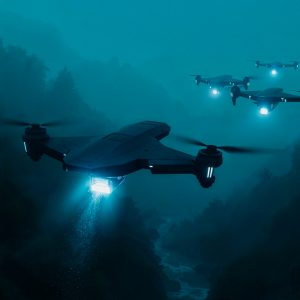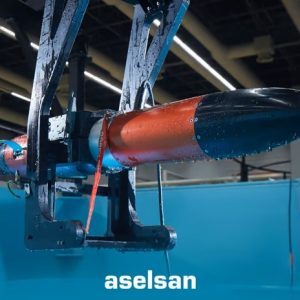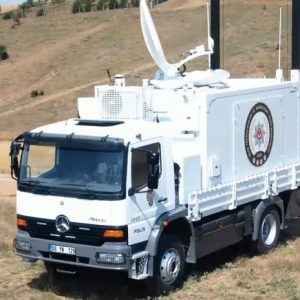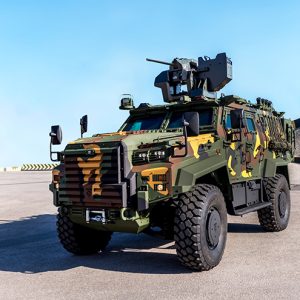Silent Swarm 2026 signals the U.S. Navy’s intent to embed Electromagnetic Spectrum Operations (EMSO) capabilities into attritable, multi-domain unmanned systems (UxS), pushing swarm tactics beyond mere coordination into distributed non-kinetic effects. That could redefine how future operations contest the electromagnetic domain.
Key Facts
| Item | Detail |
|---|---|
| Solicitation | NSWC Crane issued Special Notice N0016425SNC28 – Silent Swarm 2026, open 19 September to 31 October 2025 |
| Scope | Experimentation to integrate EMSO effects (deception, jamming, geolocation, ALT‑PNT, resilient comms) on unmanned platforms across domains |
| TRL Range | Technologies in TRL 2–5 are explicitly invited for submission; modular and scalable designs especially valued |
| Event Timing | Planning workshops expected late 2025; two‑week field experimentation in mid‑2026 (some sources cite July) |
| Cost Estimate | Technologies in TRL 2–5 are explicitly invited for submission; modular and scalable designs are especially valued |
Context
Modern warfare increasingly treats the electromagnetic spectrum (EMS) as a contested domain. Traditional EW platforms are expensive, centralized, and high‑value targets. At the same time, unmanned systems are proliferating. The logical next frontier is enabling swarm networks to carry EMSO capabilities — jamming, deception, geolocation and hardened communications — not just sensing or relay functions.
Swarm architectures have matured in terms of coordination, path planning, and distributed awareness, but the embedding of active EMSO payloads across nodes — especially in contested environments — remains an immature area. Many demonstrations remain lab‑bound or one-off. Silent Swarm offers a structured, joint, sandboxed approach to test these capabilities under realistic constraints.
Previous Silent Swarm iterations (e.g. Silent Swarm 2025) explored unmanned systems in multi‑domain environments; 2026 appears to deepen that focus on EMSO effects rather than just platform coordination.
New development
On 19 September 2025, the U.S. Navy’s NSWC Crane Division released the Special Notice N0016425SNC28 for Silent Swarm 2026. This is not a procurement — it is a request for submissions to participate in the experimentation event.
The notice states that the experiment series focuses on “early development Electromagnetic Spectrum Operations (EMSO) capabilities that can be employed on attritable, multi-domain Unmanned Systems (UxS)”
Submissions must describe initiatives (technologies) and how they might integrate or operate within a multi‑domain swarm environment. The event is expected to run over two weeks in mid‑2026, preceded by planning workshops. Some third-party sources cite July 2026 as the likely window for the experiment.
Participants must also engage in virtual planning sessions, integrate with a common operating picture (COP) and provide interoperability with tactical awareness tools (e.g., TAK).
Importantly, the notice emphasizes modularity, autonomy, and interoperability across domains — so that effects contributed by different unmanned nodes may combine to deliver mission outcomes.
Technical / Operational implications
Distributed effect coordination & deconfliction. Achieving coherent EMSO effects across nodes (e.g. spatial jamming, deception) demands tight synchronization, interference avoidance, and adaptive control.
Autonomous adaptation. Each node must sense local conditions (interference, terrain, mission flow) and adjust parameters dynamically — while contributing to the global mission vector.
Payload vs SWaP constraints. EMSO modules (radios, transmitters, directional antennas) impose power, volume, thermal and weight burdens. Balancing effect strength versus endurance is critical.
Spectrum management & resilience. In contested EMS environments, frequent spectrum changes, interference, and adversarial counter‑EMS are expected. Swarms must support agile frequency hopping, fallback communications, and robust geolocation.
Attritability & redundancy. The design must account for node losses or degradation — the swarm must remain functional despite attrition or variable performance across nodes.
Cross‑domain handoffs. Because the experiment covers land, sea, air, undersea, enabling handoff of data or EMSO functions between domains (e.g. UAV ↔ USV) is an extra complexity.
Interoperability & command integration. EMSO effects must feed into command structures, targeting links, and other EW/ISR systems — connecting swarm‑level non‑kinetic effects with broader force operations.
Programme / procurement angle
Silent Swarm 2026 is structured as an RFI / experimentation event, not a procurement. Selected initiatives receive laboratory and field experimentation support, but not guaranteed contracts.
Success in experimentation may lead to follow‑on prototyping or integration contracts, particularly for payload modules or interoperable EMSO subsystems. Historically, downselects in prior rounds have formed pipelines into Navy R&D and prototype tracks.
Allied nations or defence agencies may mirror or participate in similar EMSO swarm experimentation, which could open cross‑allied collaboration. We will monitor developments via our naval & unmanned systems and analysis hubs (see internal links).
Because this topic is emerging, mainstream defence media has given only cursory attention — most stories emphasize “swarm drones” or “EW systems” independently, not the convergence of EMSO-enabled unmanned swarms.
Risks / alternatives
- Complex system integration risk. The multiplexed challenge of autonomy, EMSO payloads, spectrum control and swarm behaviour may lead many submissions to underperform or fail.
- Adversary counter‑EMS strategies. As EMSO swarms emerge, adversaries may counter with anti‑swarm jamming, detection, spoofing or electromagnetic denial.
- Scalability challenge. What works in small or controlled experimentation may not scale to field scale, spectrum congestion, or contested environments.
- Overdependence on communications/synchronization. Swarms that rely too heavily on networked coordination may be fragile under degraded comms.
- Competing approaches. Some architectures may prefer hybrid EW platforms supported by unmanned sensors, rather than fully distributed EMSO swarms.
Implications / Next
Silent Swarm 2026 could be a turning point if it validates modular, interoperable EMSO swarm effects. Its outcomes may guide doctrine, investment and force design toward distributed EMSO as a force multiplier, not just sensors or jammers.
Organisations aiming to compete or shape the field should prototype modular EMSO payload nodes, cultivate autonomy with spectrum awareness, and prepare for integration into joint data environments (COP / TAK). They should also be ready to pivot rapidly, given the high risk and experimental nature of this domain.
Defence Agenda will follow post‑event reports, downselect announcements, and follow‑on contract notices, and publish deeper analysis in our naval & unmanned systems and defence tech columns.
If resource permits, we may also commission a comparative analysis of allied EMSO swarm experiments and their doctrinal implications.
Further Reading
- Internal: Defence Agenda — News hub: defenceagenda.com/news
- Internal: Defence Agenda — Analysis hub: defenceagenda.com/analysis
- External: Government Special Notice N0016425SNC28 — Silent Swarm 2026 (SAM.gov)
- External: sUAS News coverage of Silent Swarm 2026 scope
- External: G2Xchange post on EMSO capabilities solicited in Silent Swarm 2026











